Tuna in olive oil. A traditional method of preservation.
Little by little winter is coming, and traditionally the houses began to prepare their pantry to face the winter.
The products and preservation methods brought to the peninsula by other villages, such as the Romans with Salting and olive oil, or the Arabs with pickling or adobos. All these influences made it possible for Spanish families to learn how to keep their fresh products longer and then fill the pantry to afford the cold winter.
This week I received a gift from the fish market for cooking it on my blog. Thanks, Eugenio, it is fantastic.
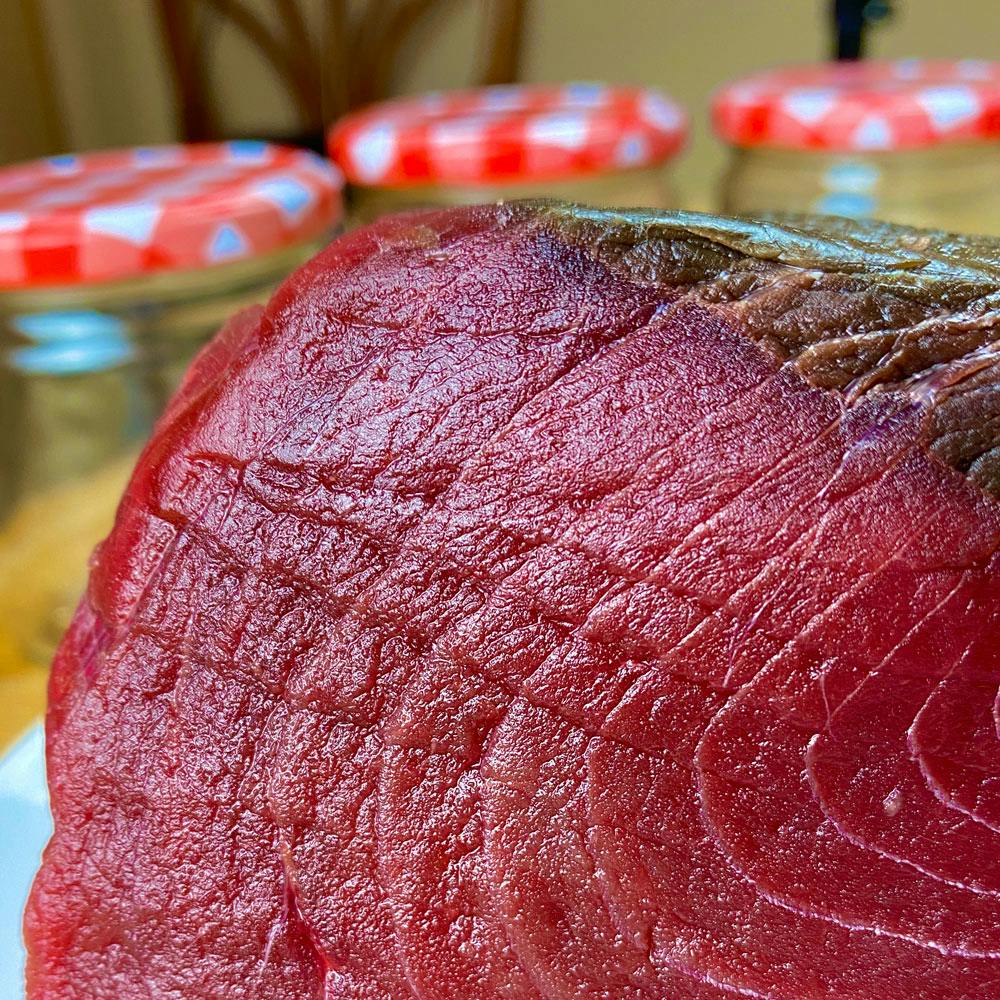
To be able to conserve so much quantity today, we have freezers and advanced preservation techniques. But in times past, how did they do it?
Well, today I'm going to show you the traditional way to do it:
Tuna in olive oil.
Ingredients
- Extra Virgin Olive oil Arbequina 1 L approx
- Tuna 750 g
- Water 1 L
- Sea Salt 30 g
- A Bay leave (optional)
Preparation
This recipe consists of three main steps:
Cutting and first cooking
- Clean the piece of tuna, removing the black part of blood, to avoid sour flavours.
- Once clean, cut the tuna into logs as high as your jars. In the photo, you can see how I have done it.
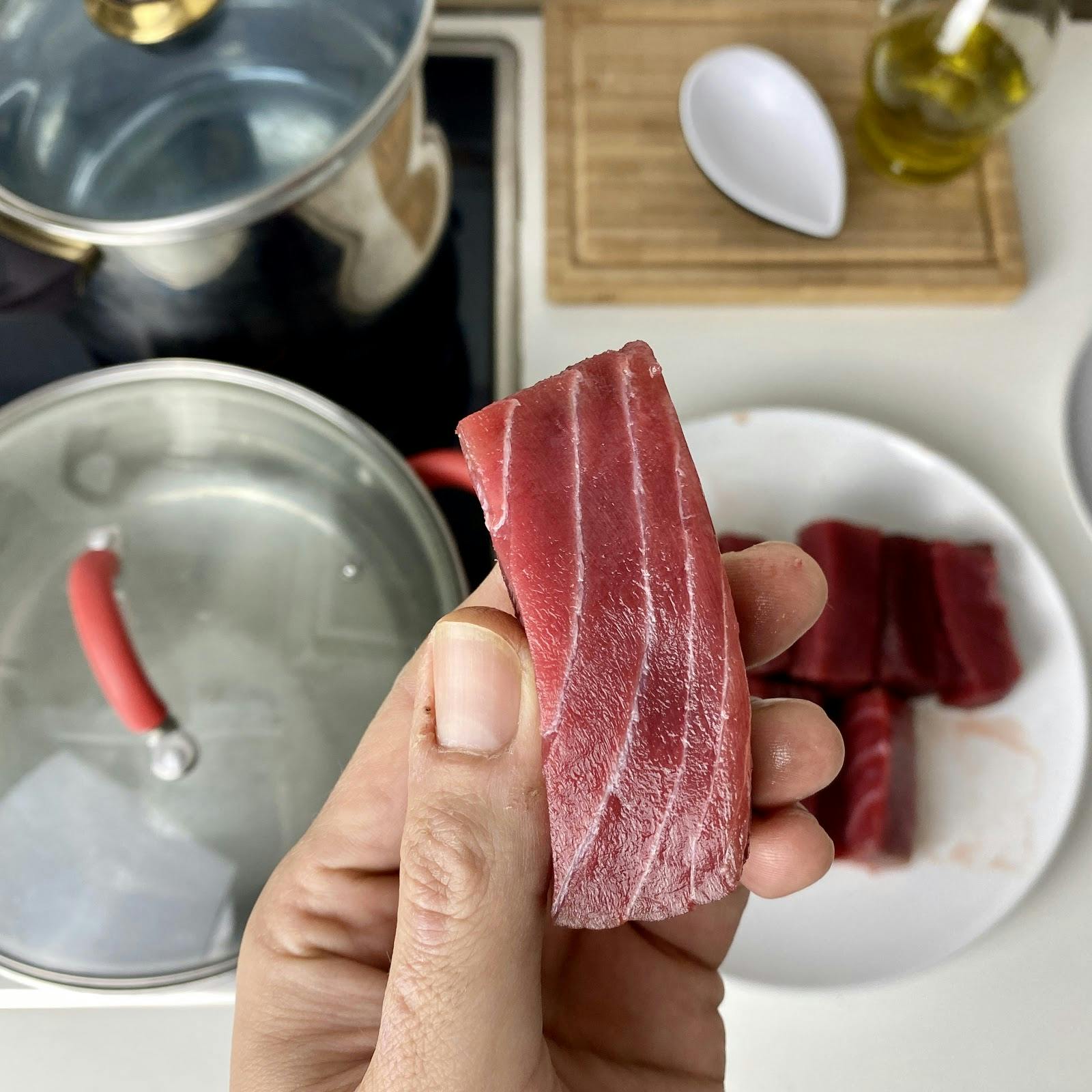
- On the other hand, put the water with the salt in a pot, add the tuna pieces, and boil over low heat for about 15 min.
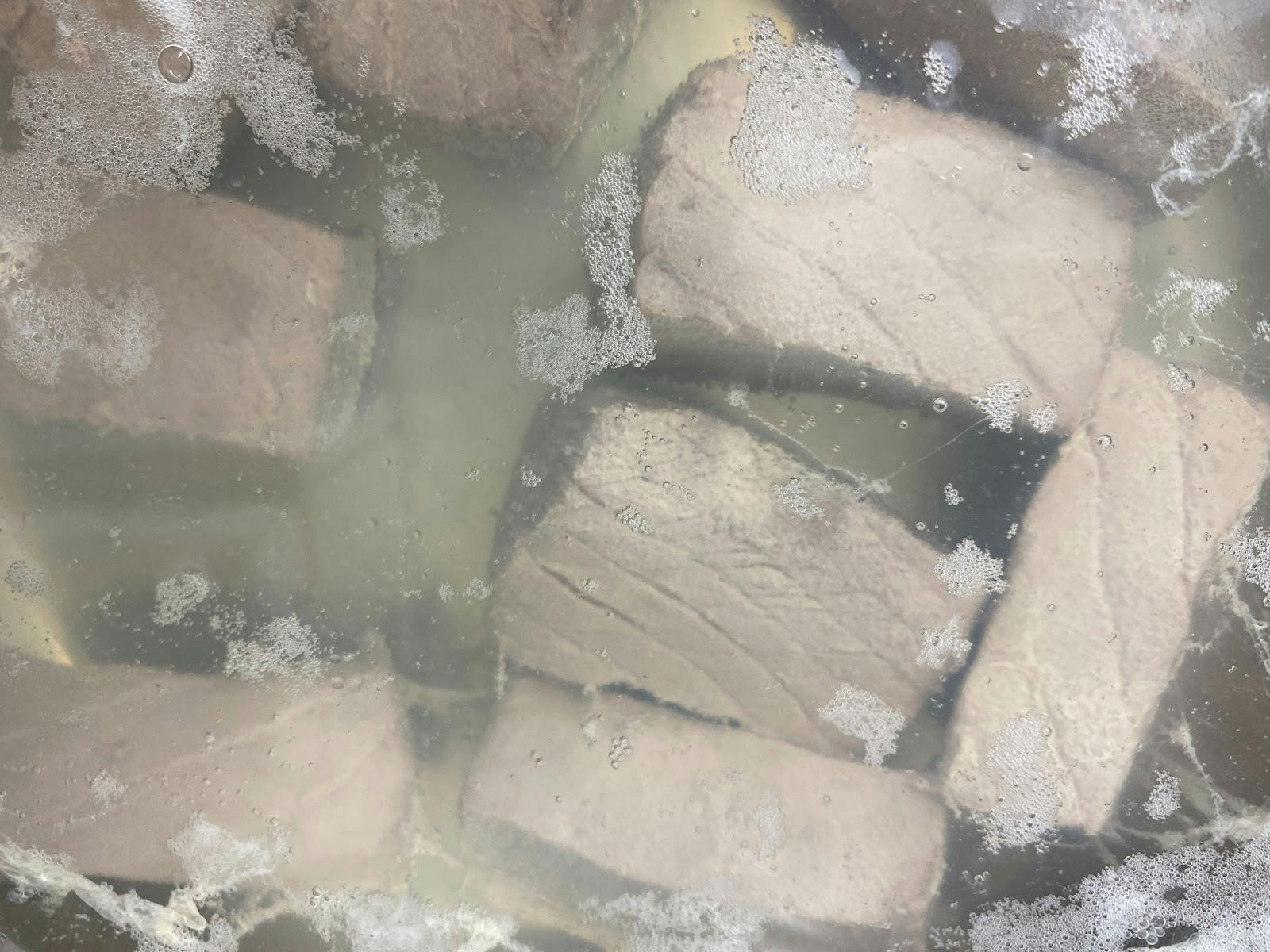
- Remove it from the water and cool it down in the fridge on absorbent paper to dry them as best as possible.
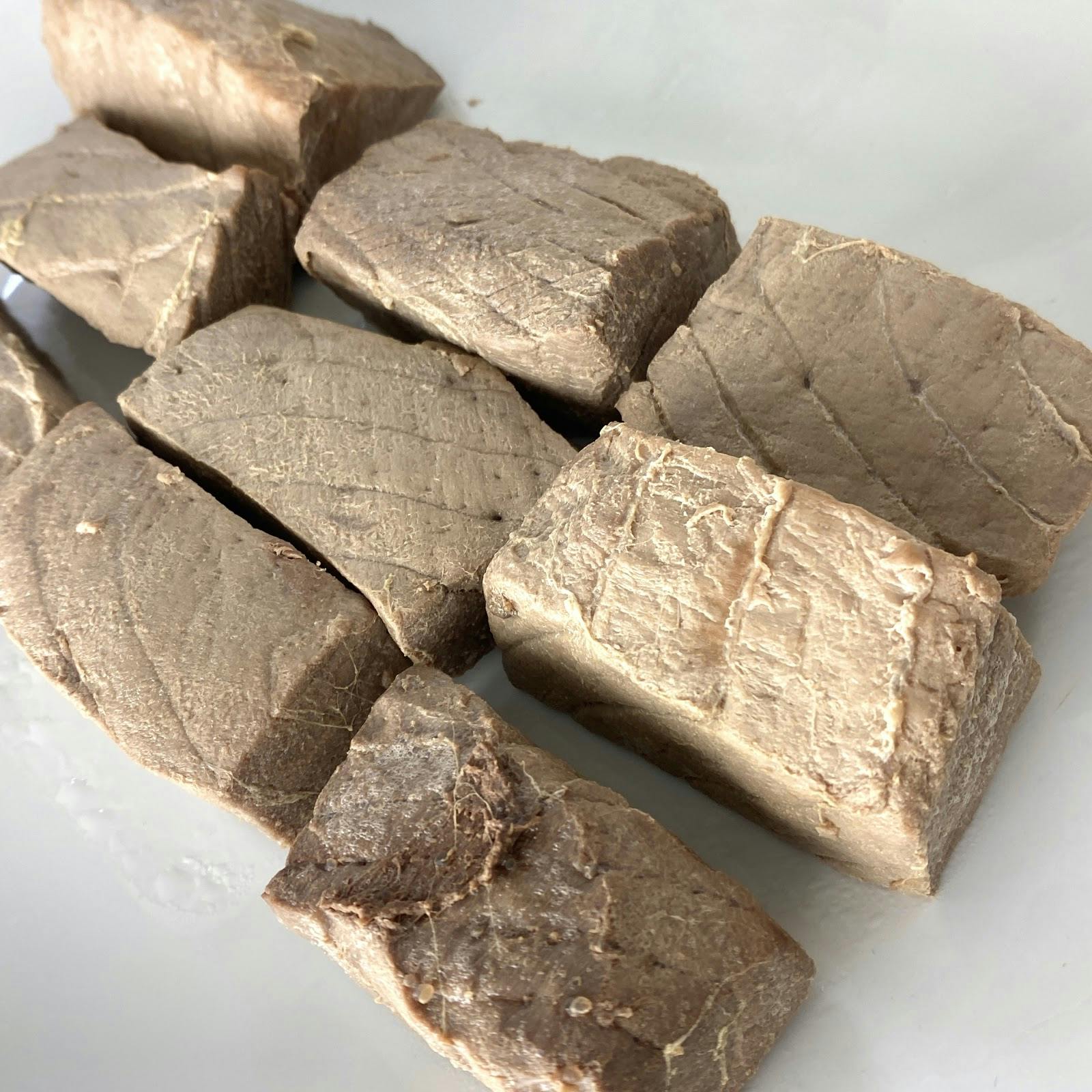
Jars Sterilisation.
- Place the glass jars and their lids in a pot. Cover them with water, and boil them for approximately twenty minutes.
- Let the water cool down with the jars inside, and then take them out to let them dry on a rack or a dry cloth. Do the same operation with the lids.
- Preserve upside down to fill them later.

Cooked tuna with olive oil and bain-marie.
- Once the tuna is cold and dry, retrieve our glass jars. Cover the base of each one with the Arbequina olive oil, and then introduce the tuna logs in the jar, in the way that they fit the best possible.
- Finish filling each jar with olive oil until it covers all the pieces, leaving approximately 1 cm at the mouth of the jar. Close them well with the lids.
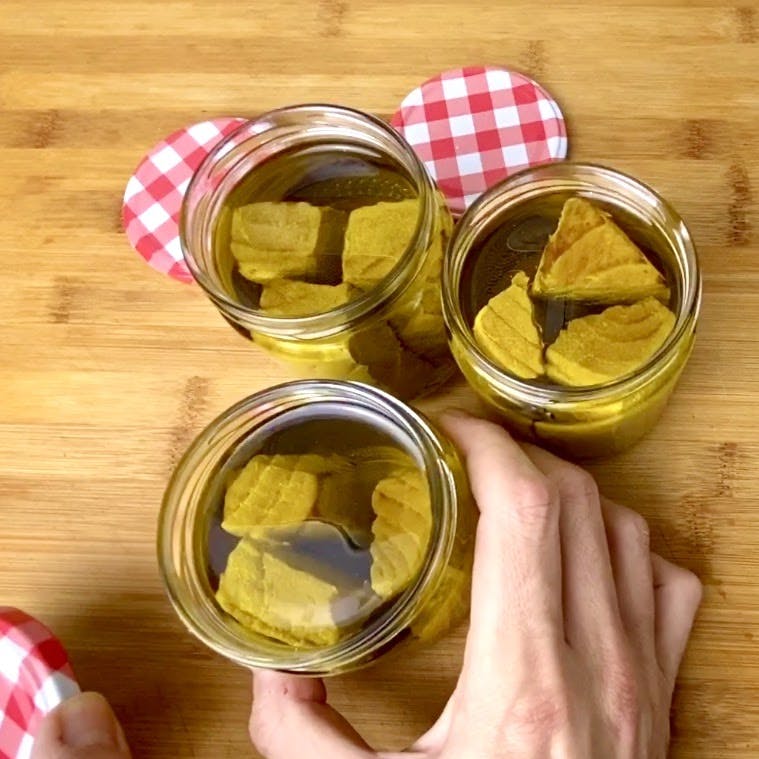
- Place a kitchen cloth at the bottom of a pot to prevent them from breaking or splitting during cooking.
- Put the jars with the tuna and oil and cover them entirely with water.
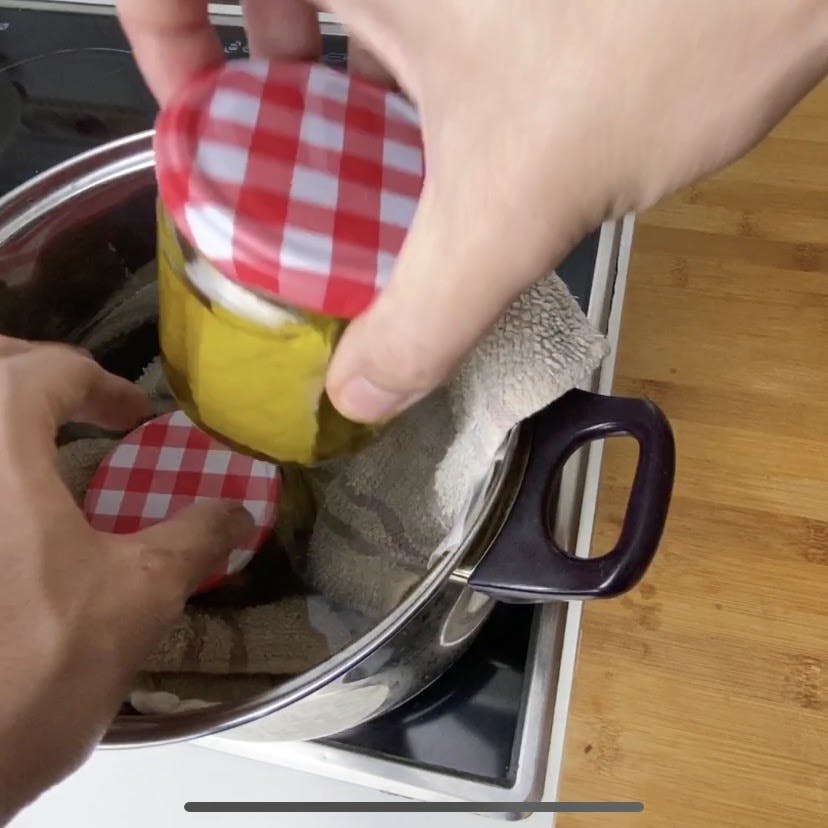
- When it starts to boil, we will calculate another 30 minutes of cooking over low heat.
- Turn off the heat and let the cans cool down in the water for another 15 minutes.
- Take out and dry the jars, and put them upside down on a cloth so that the emptying process ends.

- After a couple of days, retrieve the jars and check that they have not lost any oil. Then your canned tuna in oil will be ready.
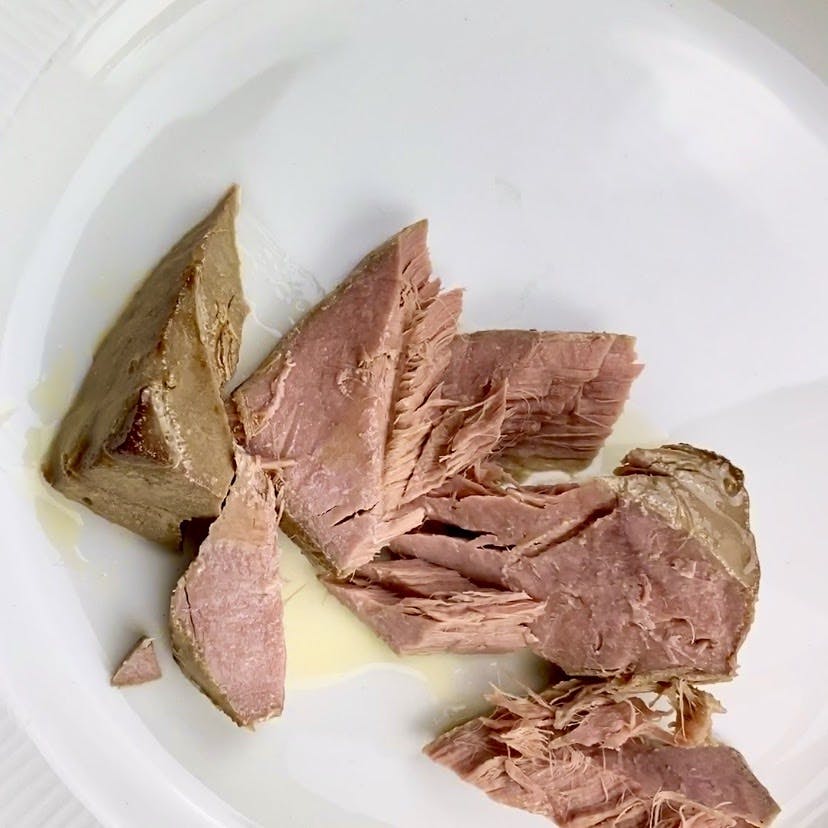
My advice if you make this recipe are: Store your tuna jars in dark places to avoid oxidation.
Pre-freeze the fresh tuna for approximately five days before cooking.
Consume preferably in a month after preparation.
Keep the tuna jars in the fridge.
Here you have an idea of what you can prepare with this beautiful product that I have made today.

Avocado, Red onion, Tomato, Coriander, Garlic, salt and TUNA IN OLIVE OIL.
Have a tasty day!



